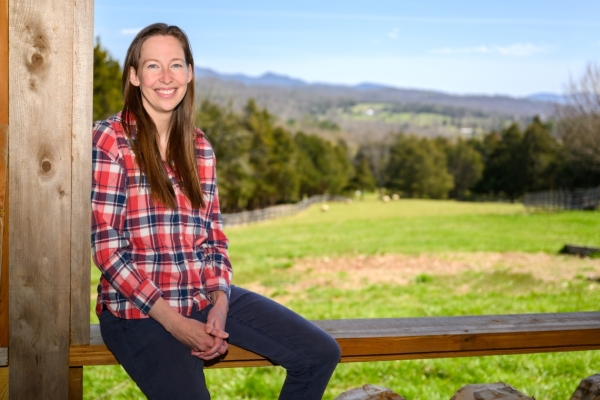W&L Earth and Environmental Geoscience Professor Publishes Peer-Reviewed Article Margaret Anne Hinkle collaborated with additional authors to produce an article focused on manganese exposure in spring and well water in the Shenandoah Valley.
Margaret Anne Hinkle, assistant professor of earth and environmental geoscience at Washington and Lee University, recently co-authored a peer-reviewed article in Environmental Geochemistry and Health, the official journal of the Society for Environmental Geochemistry and Health.
Hinkle co-authored the paper “Manganese Exposure From Spring and Well Waters in the Shenandoah Valley: Interplay of Aquifer Lithology, Soil Composition and Redox Conditions,” alongside W&L alumnae Marina Croy ’22 and Haley Culbertson ’22 and a host of additional collaborators.
The research, which was funded by a grant from the Keck Geology Consortium and was performed in collaboration with the Virginia Household Water Quality Program (VAHWQP), looks at the levels of manganese contamination in drinking water sourced from wells and springs in the Shenandoah Valley. High levels of manganese can be problematic, as low-level chronic exposure can result in a variety of health and neurodevelopmental effects.
The group collected spring and well water samples and soil samples from various regions throughout the Shenandoah Valley – both from karst (dolostone and limestone) and non-karst (sandstone and shale) aquifers. This data was used to supplement pre-existing water data from the National Water Information System and the VAHWQP to determine that water from wells and springs within karst aquifers is preferable, with lower manganese levels. Water from non-karst aquifers displayed elevated levels of manganese, which carries a heightened risk.
“I am so happy to see our paper out in the world, and it was an amazing experience working with a large group of thesis students through the Keck Geology Consortium, including our very own Marina Croy and Haley Culbertson,” said Hinkle. “The students should be very proud of their hard work; the research itself is important on both a local and global level. Many folks in the Shenandoah Valley rely on water wells and springs for their drinking water, and our research can be used to help inform our community. An example would be determining where best to drill a well to minimize manganese exposure risk. By comparing manganese levels in water from karst and non-karst aquifers, our study applies to many regions worldwide.”
Hinkle has been a member of the W&L faculty since 2017, teaching in the Earth and Environmental Geoscience Department and serving as an affiliate faculty member with the environmental studies program. She holds a bachelor’s degree in chemistry from Sewanee: The University of the South, and she earned a master’s and doctorate degree, both in earth and planetary sciences from Washington University in St. Louis.
If you know a W&L faculty member who has done great, accolade-worthy things, tell us about them! Nominate them for an accolade.
 Margaret Anne Hinkle, assistant professor of earth and environmental geoscience
Margaret Anne Hinkle, assistant professor of earth and environmental geoscience
You must be logged in to post a comment.